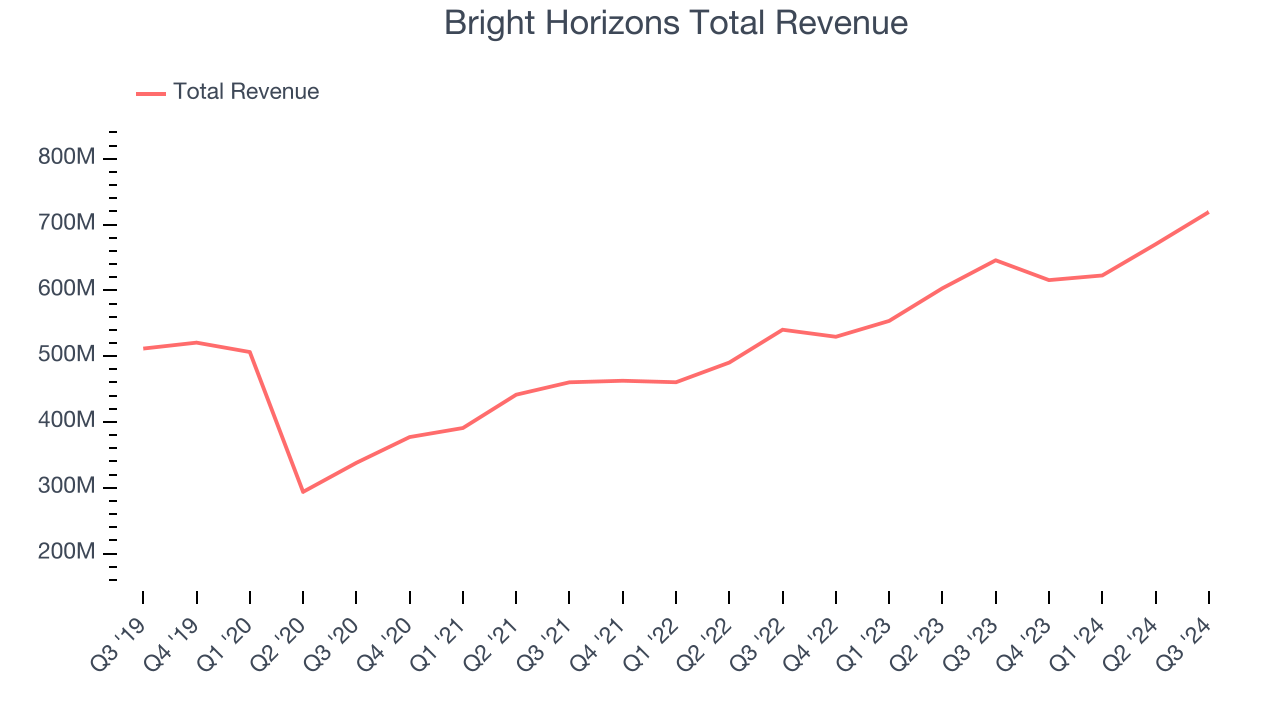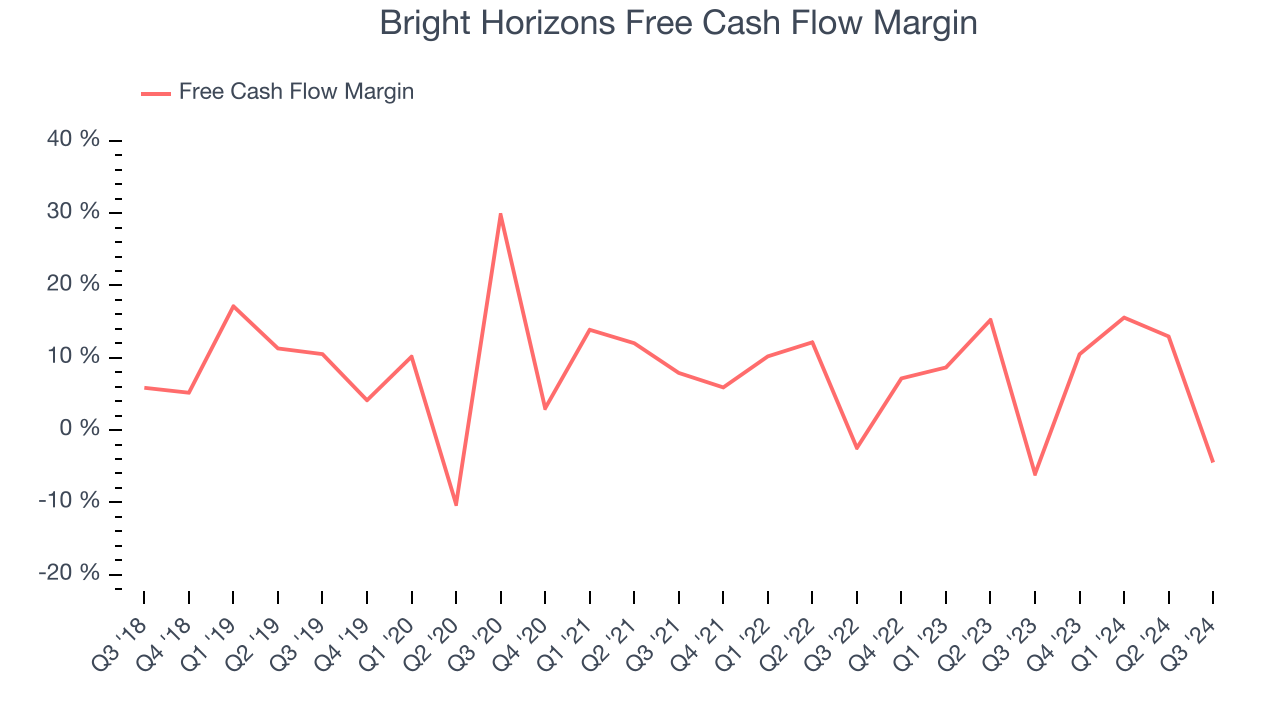Child care and education company Bright Horizons (NYSE:BFAM) met Wall Street’s revenue expectations in Q3 CY2024, with sales up 11.4% year on year to $719.1 million. The company expects the full year’s revenue to be around $2.68 billion, close to analysts’ estimates. Its non-GAAP profit of $1.11 per share was 4.5% above analysts’ consensus estimates.
Is now the time to buy Bright Horizons? Find out by accessing our full research report, it’s free.
Bright Horizons (BFAM) Q3 CY2024 Highlights:
- Revenue: $719.1 million vs analyst estimates of $713.2 million (in line)
- Adjusted EPS: $1.11 vs analyst estimates of $1.06 (4.5% beat)
- EBITDA: $121 million vs analyst estimates of $120.3 million (small beat)
- The company reconfirmed its revenue guidance for the full year of $2.68 billion at the midpoint
- Management raised its full-year Adjusted EPS guidance to $3.40 at the midpoint, a 1.3% increase
- Gross Margin (GAAP): 25.2%, up from 22.4% in the same quarter last year
- Operating Margin: 12.4%, up from 10.3% in the same quarter last year
- EBITDA Margin: 16.8%, up from 15.7% in the same quarter last year
- Free Cash Flow was -$32.18 million compared to -$39.18 million in the same quarter last year
- Market Capitalization: $7.75 billion
Company Overview
Founded in 1986, Bright Horizons (NYSE:BFAM) is a global provider of child care, early education, and workforce support solutions.
Education Services
A whole industry has emerged to address the problem of rising education costs, offering consumers alternatives to traditional education paths such as four-year colleges. These alternative paths, which may include online courses or flexible schedules, make education more accessible to those with work or child-rearing obligations. However, some have run into issues around the value of the degrees and certifications they provide and whether customers are getting a good deal. Those who don’t prove their value could struggle to retain students, or even worse, invite the heavy hand of regulation.
Sales Growth
Reviewing a company’s long-term performance can reveal insights into its business quality. Any business can have short-term success, but a top-tier one sustains growth for years. Regrettably, Bright Horizons’s sales grew at a sluggish 5.4% compounded annual growth rate over the last five years. This shows it failed to expand in any major way, a rough starting point for our analysis.

Long-term growth is the most important, but within consumer discretionary, product cycles are short and revenue can be hit-driven due to rapidly changing trends and consumer preferences. Bright Horizons’s annualized revenue growth of 16% over the last two years is above its five-year trend, suggesting some bright spots. 
This quarter, Bright Horizons’s year-on-year revenue growth was 11.4%, and its $719.1 million of revenue was in line with Wall Street’s estimates.
Looking ahead, sell-side analysts expect revenue to grow 9.2% over the next 12 months, a deceleration versus the last two years. This projection doesn't excite us and shows the market believes its products and services will see some demand headwinds.
Unless you’ve been living under a rock, it should be obvious by now that generative AI is going to have a huge impact on how large corporations do business. While Nvidia and AMD are trading close to all-time highs, we prefer a lesser-known (but still profitable) semiconductor stock benefitting from the rise of AI. Click here to access our free report on our favorite semiconductor growth story.
Cash Is King
Although earnings are undoubtedly valuable for assessing company performance, we believe cash is king because you can’t use accounting profits to pay the bills.
Bright Horizons has shown weak cash profitability over the last two years, giving the company limited opportunities to return capital to shareholders. Its free cash flow margin averaged 7.2%, subpar for a consumer discretionary business.

Bright Horizons burned through $32.18 million of cash in Q3, equivalent to a negative 4.5% margin. The company’s cash burn was similar to its $39.18 million of lost cash in the same quarter last year . These numbers deviate from its longer-term margin, raising some eyebrows.
Key Takeaways from Bright Horizons’s Q3 Results
It was encouraging to see Bright Horizons slightly top analysts’ EPS expectations this quarter. We were also happy its revenue narrowly outperformed Wall Street’s estimates. Zooming out, we think this was a decent quarter featuring some areas of strength. The stock remained flat at $132.83 immediately after reporting.
Should you buy the stock or not? The latest quarter does matter, but not nearly as much as longer-term fundamentals and valuation, when deciding if the stock is a buy. We cover that in our actionable full research report which you can read here, it’s free.
